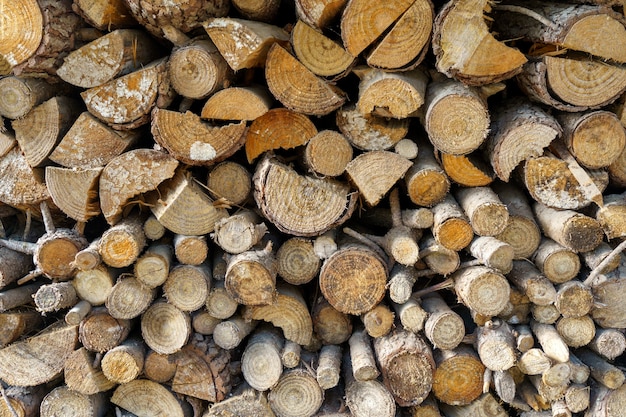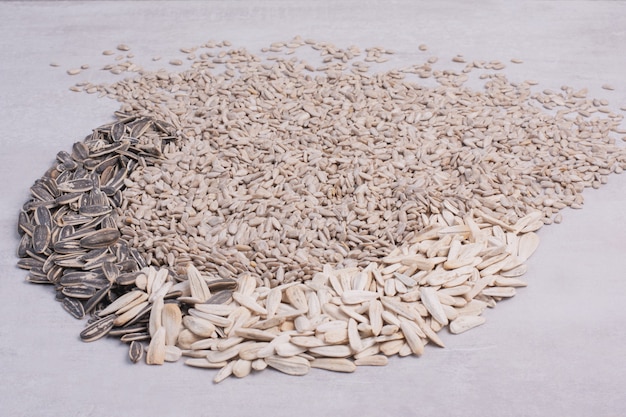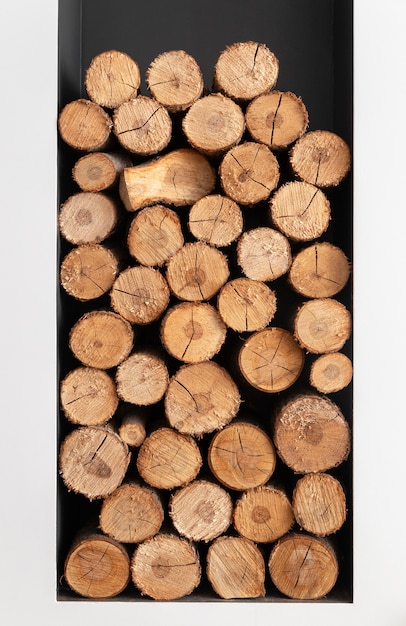Can you use wood pellets in a barbecue?
Barbecuing is a popular pastime in the UK, especially during the summer months. Many people love the smoky flavor and aroma that comes from cooking their food over an open flame. While traditional charcoal and gas barbecues are commonly used, there has been a growing interest in using wood pellets as a fuel source. However, the question remains: can you use wood pellets in a barbecue?
Understanding Wood Pellets
Wood pellets are small, compressed pieces of wood made from materials such as sawdust and wood chips. They are commonly used as a renewable energy source for heating purposes, but their versatility has led to experimentation with using them in barbecues as well.
Compared to traditional fuel sources like charcoal and gas, wood pellets offer some unique advantages. They produce less ash, making cleanup easier, and they can provide a consistent and controlled heat source for cooking. Additionally, wood pellets can infuse a distinct flavor into the food, enhancing the overall taste experience.
The Use of Wood Pellets in Barbecues
Using wood pellets in a barbecue is indeed possible, and many barbecue enthusiasts have embraced this alternative fuel source. However, it is important to note that not all barbecues are designed to accommodate wood pellets.
If you have a pellet barbecue specifically designed for wood pellets, then you can certainly use them with confidence. These barbecues feature mechanisms that automatically feed the pellets into the firebox, maintaining a consistent temperature throughout the cooking process.
On the other hand, attempting to use wood pellets in a traditional charcoal or gas barbecue may not yield the desired results. The design and airflow of these barbecues are not optimized for wood pellets, which can lead to inefficient combustion and inconsistent heat.
Benefits of Using Wood Pellets
For those who have a pellet barbecue or are considering purchasing one, using wood pellets offers several benefits:
- Enhanced flavor: Wood pellets can impart a distinct smoky flavor to your food, enhancing the taste.
- Temperature control: Pellet barbecues allow for precise temperature control, helping you achieve perfect results every time.
- Cleaner burning: Wood pellets produce minimal ash and emit fewer pollutants compared to other fuel sources.
- Efficiency: The controlled combustion of wood pellets ensures efficient fuel usage, maximizing heat output.
“Using wood pellets in my pellet barbecue has completely transformed my grilling experience. The flavor and control I get with wood pellets are unmatched.” – John, BBQ enthusiast
Choosing the Right Wood Pellets
When using wood pellets in a barbecue, it is important to select high-quality pellets that are specifically designed for cooking.
Look for pellets made from hardwoods like oak, hickory, or fruitwoods such as apple or cherry. These types of wood are known for their pleasant flavors and provide excellent results when used in barbecues.
| Wood Type | Flavor Profile |
|---|---|
| Oak | Strong and smoky |
| Hickory | Rich and bacon-like |
| Apple | Sweet and mild |
Experimenting with different wood flavors can add variety to your barbecue creations, allowing you to tailor the taste to your preference or the specific dish you are cooking.
How do you light wood pellets on a BBQ?
Why use wood pellets for BBQ?
Wood pellets have become increasingly popular among BBQ enthusiasts due to their versatility and ability to infuse a smoky flavor into the food. Made from compressed sawdust, they are a clean-burning and sustainable alternative to traditional charcoal or gas.
The importance of proper lighting
Properly lighting wood pellets is crucial to ensure a successful BBQ experience. Unlike charcoal that can be easily lit with lighter fluid, wood pellets require a different approach.
Here are three simple steps to effectively light wood pellets on your BBQ:
Step 1: Choose the right kind of wood pellets
To enhance the flavor of your food, select high-quality wood pellets. Popular options include hickory, mesquite, applewood, or cherry for different taste profiles.
Step 2: Preparing the BBQ grill
Clean your BBQ grill and remove any ash or debris from previous use. Ensure proper airflow by opening the vents on the bottom and top of the grill. This will help maintain a steady temperature during the cooking process.
Step 3: Lighting the wood pellets
- Fill the hopper of your pellet smoker or BBQ grill with the desired wood pellets.
- Switch on the grill and set it to the desired temperature (usually around 180-450°F).
- Allow the grill to preheat for 10-15 minutes.
- Ignite the wood pellets by inserting a lit fire starter or igniting a small amount of pellets with a propane torch. Place the lit fire starter or ignited pellets in the pellet hopper.
- Close the lid of the grill and wait for the smoke to appear. The grill will gradually reach the desired temperature.
- Once the desired temperature is reached, you can start grilling your food.
Remember to always follow the manufacturer’s instructions when using your specific pellet smoker or BBQ grill.
By following these steps, you’ll be able to effortlessly light wood pellets on your BBQ and enjoy the delicious smoky flavors they bring to your grilled dishes. Happy grilling!
How Do You Use Wood Pellets on Charcoal?
Wood pellets are a popular alternative to traditional charcoal for grilling and smoking. They are made from compressed sawdust and offer several advantages, including a cleaner burn, more consistent temperature, and enhanced flavor. If you’re new to using wood pellets on charcoal, here are some tips to get started:
1. Choosing the Right Wood Pellets
When selecting wood pellets for grilling or smoking, consider the type of wood and its flavor profile. Popular options include hickory, mesquite, apple, cherry, and oak. Each wood imparts a distinct flavor to your food, so experiment with different varieties to find your preference.
2. Preparing the Charcoal
Before adding wood pellets, prepare your charcoal. Start by arranging the coals in a pyramid shape at the bottom of your grill or smoker. If you’re using a charcoal chimney starter, fill it with charcoal and light it. Once the coals are hot and glowing, spread them evenly across the grill surface.
3. Adding Wood Pellets
To use wood pellets on charcoal, simply scatter a handful of pellets over the hot coals. You don’t need to soak the pellets like you would with wood chips, as pellets are already highly compacted. The heat from the charcoal will gradually ignite the pellets, releasing their aromatic smoke.
4. Controlling the Smoke
Controlling the amount of smoke produced is essential when using wood pellets on charcoal. Too much smoke can overpower the flavors of your food. To regulate the smoke, partially close the air vents on your grill or smoker. This will restrict oxygen flow and help maintain a smoldering fire.
5. Monitoring Temperature and Cooking Time
Wood pellets burn at a consistent temperature, making it easier to maintain the desired heat level throughout your cooking process. However, it’s still important to monitor the temperature with a grill thermometer. Adjust the air vents and add more wood pellets as needed to achieve the desired heat.
Pro tip: Using a combination of charcoal and wood pellets can create a balanced flavor profile for your grilled or smoked dishes.
Using wood pellets on charcoal can elevate your grilling and smoking experience, allowing you to infuse your food with delicious flavors. With these tips in mind, you’ll be well-equipped to use wood pellets effectively and achieve outstanding results.
Do You Have to Clean Pellet Grill?
When it comes to pellet grills, regular cleaning is essential to ensure optimal performance and longevity. While it may not be the most exciting task, taking the time to clean your pellet grill can make a significant difference in the flavor of your food and overall grill efficiency.
Why Should You Clean Your Pellet Grill?
Regular cleaning of your pellet grill prevents the buildup of grease, food particles, and ash. This buildup can lead to uneven heat distribution, poor smoke production, and potentially even a fire hazard.
Additionally, a clean grill will help you achieve better flavor in your cooked dishes. When the grill grates are covered in residue, it can impart unpleasant flavors onto your food. Keeping your grill clean ensures that you enjoy the true taste of your ingredients.
“A clean grill is a happy grill, and a happy grill makes delicious food.”
How to Clean Your Pellet Grill
Cleaning your pellet grill doesn’t have to be a daunting task. Here’s a simple step-by-step guide:
- Start by emptying the ash collection pot – Remove the pot and discard the ash safely. This will prevent it from impeding the airflow and potentially causing temperature fluctuations during cooking.
- Brush the grill grates – Use a grill brush to remove any remaining food particles or residue. This will ensure even heat distribution and prevent unwanted flavors from transferring to your food.
- Clean the drip tray – The drip tray collects grease during cooking. Remove it and clean it thoroughly with warm soapy water or a grill cleaner to prevent any buildup.
- Wipe down the exterior – Use a damp cloth to wipe down the outside of your pellet grill, removing any dirt or grease that may have accumulated.
Remember, the frequency of cleaning depends on how often you use your pellet grill. A good rule of thumb is to clean it thoroughly every few uses and perform a lighter cleaning after each use.
Do You Soak BBQ Pellets?
Introduction
When it comes to preparing a delicious barbecue, using the right type of fuel is essential. BBQ pellets have gained popularity among grill enthusiasts due to their convenience and ability to impart unique flavors to grilled food. However, there is often debate about whether or not to soak these pellets before use. In this article, we will explore the topic of soaking BBQ pellets and provide you with some valuable insights.
To Soak or Not to Soak?
One of the main reasons people soak BBQ pellets is to prevent them from burning too quickly. However, this practice is not necessary for most pellet grills. Modern pellet grills are designed to burn the pellets efficiently without the need for soaking. In fact, soaking the pellets can negatively affect their performance by reducing their heat output and creating excess smoke.
Soaking BBQ pellets is not recommended, except in specific cases such as:
- High-temperature cooking: If you’re planning to cook at extremely high temperatures, soaking the pellets for a short period (15-30 minutes) can help delay combustion and provide a longer burning time.
- Enhancing flavors: Some grillers prefer to soak their pellets in flavored liquids, such as fruit juices or beer, to impart additional flavors to their food. However, this method is more of a personal preference rather than a necessity.
Expert Opinion
According to renowned BBQ experts, such as Steven Raichlen, soaking BBQ pellets is unnecessary. Raichlen recommends avoiding soaking as it can lead to inconsistent heat and smoke production. He suggests using dry pellets for optimal results and advises against wasting time soaking them.
“Soaking wood chips or pellets in water is one of the great myths of barbecue,” Raichlen says. “Like a soggy book, wet wood just doesn’t want to burn. Wet wood steams, producing water vapor rather than smoke, and it resists combustion, creating less heat. You can get smoky flavors by using dry wood chips or pellets, properly applied.”
Can you cook directly over wood pellets?
Wood pellets have gained popularity among barbecue enthusiasts for their convenience and ability to add a unique smoky flavor to grilled food. While they are primarily designed for use in pellet grills, many people wonder if it is possible to cook directly over wood pellets. Let’s explore this topic further.
Using wood pellets as a fuel source
Wood pellets are typically used as a fuel source in pellet grills, which employ an electrically controlled auger system to feed the pellets into a fire pot where they are ignited. The heat generated from burning the pellets creates an indirect cooking environment, allowing for slow and even cooking.
However, using wood pellets directly as a cooking surface is not recommended. Unlike charcoal or gas grills, wood pellets do not provide a solid and stable cooking surface. They are meant to be burned, not used as a direct heat source.
The importance of indirect heat
When it comes to grilling or smoking, indirect heat is key. It allows for more controlled cooking, especially for larger cuts of meat that require longer cooking times. Directly cooking over wood pellets would result in uneven heat distribution and potentially lead to burnt or undercooked food.
“Directly cooking over wood pellets would result in uneven heat distribution and potentially lead to burnt or undercooked food.”
Alternative ways to use wood pellets
If you’re looking to incorporate the smoky flavor of wood pellets into your cooking, there are alternative methods you can try:
- Use a pellet grill: Invest in a quality pellet grill, which is specifically designed to utilize wood pellets for indirect cooking.
- Use a smoker box: For gas or charcoal grills, you can use a smoker box or foil pouch filled with wood pellets to achieve a similar smoky flavor.
- Infuse with wood pellets: Wrap your food in foil and place a handful of wood pellets on top before sealing. This method allows the smoke from the pellets to infuse into the food while it cooks on a traditional grill.
By utilizing these alternative methods, you can enjoy the smokiness of wood pellets without compromising the quality and safety of your cooking.
In conclusion
While wood pellets are fantastic for indirect cooking in pellet grills, it is not recommended to cook directly over them. Ensure you have a solid and stable cooking surface to achieve optimal results in your grilling adventures.
Conclusion
Cleaning your pellet grill is an essential part of owning and maintaining one. Regular cleaning not only ensures optimal performance and flavor but also helps extend the lifespan of your grill. Take the time to clean your pellet grill, and you’ll be rewarded with better-tasting barbecues and many enjoyable grilling sessions ahead.
In most cases, soaking BBQ pellets is unnecessary and can actually hinder the grilling process. Modern pellet grills are designed to work efficiently without the need for pre-soaking. However, there may be specific instances where soaking can be useful, such as high-temperature cooking or flavor enhancement. Ultimately, the choice to soak or not to soak comes down to personal preference and experimentation. So go ahead, fire up your grill, and enjoy experimenting with different pellet flavors to create mouthwatering barbecue dishes!



